
2022 is almost over, and that means it’s time for LibraryThing staff to share our Top Five Books of the Year. You can see past years’ lists HERE.
We’re always interested in what our members are reading and enjoying, so we invite you to add your favorite books read in 2022 to our December List of the Month, and to join the discussion over in Talk
>> List: Top Five Books of 2022
Note: This is about what you read in 2022, not just books published in 2022.
Without further ado, here are our staff favorites!
Abby





True Biz by Sara Nović. This is a magnetic, electrifying novel, about identity, family, politics, culture, language, and the Deaf community. I absolutely loved it.
Sorrow and Bliss by Meg Mason. I didn’t know a book could be both devastating and hopeful at once, but apparently it can.
Still Life by Sarah Winman. A truly beautiful story of small moments, art, poetry, unexpected found family, a large outspoken parrot, and the backdrop of picturesque Florence.
The Half Life of Valery K by Natasha Pulley. I love everything I’ve read by Natasha Pulley, and was waffling between including this book or The Kingdoms (it’s also great! Go read it!) in my top five this year. The Half Life of Valery K doesn’t have a fantasy spin to it like much of her work, but Pulley excels at writing compelling imperfect characters that draw you deep into this unexpected historical novel.
Great Circle by Maggie Shipstead. A wonderfully epic family saga.
And because it’s hard to choose just five, honorable mentions to Portrait of a Thief by Grace D. Li, Her Majesty’s Royal Coven by Juno Dawson, A Memory Called Empire by Arkady Martin, and Less is Lost by Andrew Sean Greer.
Tim





Tomorrow, and Tomorrow, and Tomorrow by Gabrielle Zevin. Video games, Cambridge, Massachusetts and friendship—what’s not to like?
After Steve: How Apple Became a Trillion-Dollar Company and Lost Its Soul by Tripp Mickle.Fascinating study of Apple, Cook and Jony Ive.
The Making of the Atomic Bomb by Richard Rhodes. Absolutely fascinating. I chased it with Dark Sun: The Making of the Hydrogen Bomb by Richard Rhodes.
If the Universe Is Teeming with Aliens … Where Is Everybody?: Fifty Solutions to the Fermi Paradox and the Problem of Extraterrestrial Life by Stephen Webb. Enjoyable book with a clunky title. Webb systematically lists and reviews nearly every solution to the Fermi paradox anyone has ever proposed.
Persians: The Age of the Great Kings by Lloyd Llewellyn-Jones. I particularly enjoyed the coverage of Achaemenid religion and culture.
Special mention goes to The Metaverse: And How it Will Revolutionize Everything by Matthew Ball. The first half of this book, covering the various challenges, mostly technical, involved in creating a metaverse was riveting—and news to me. The second half was laughable, wild-eyed boosterism—and all-too familiar.
Kate





The Thursday Murder Club by Richard Osman. Retirement goals right here, folks. This book was a delight! It was only later that I realized the author is THE Richard Osman of Taskmaster fame (a favorite show of my household).
Luster by Raven Leilani. Oooooof, this was good.
All of This: A Memoir of Death and Desire by Rebecca Woolf. I read a lot of memoirs, especially about losing loved ones, but this is a different beast: Woolf and her husband were in the midst of splitting up when he was diagnosed with cancer. Her memoir recalls caring for him at his end of life and also moving on in a way that others didn’t find socially acceptable.
The Rose Code by Kate Quinn. Brilliant women breaking codes during WWII? We love to read it.
These Violent Delights by Micah Nemerever.. This book wasn’t even among my highest rated of the year, but I cannot stop thinking about it. There’s little I love more than really digging into characters to determine what makes them tick, why they do the things they do. Nemerever definitely gives all of that and more to the reader. But beware: it’s DARK.
Lucy





If on a Winter’s Night a Traveler by Italo Calvino. This book was amazing. I was floored. I was also strangely reminded of a series of books… an unfortunate series… the self-aware narrator, bizarre characters, meta-fictional elements, and general absurdity of this book reminded me at odd points of A Series of Unfortunate Events. And I have LibraryThing members to thank for bringing this book up in a Talk post so I was able to learn about it!
Pan’s Labyrinth: The Labyrinth of the Faun by Guillermo del Toro and Cornelia Funke, illustrated by Allen Williams. A novelization… normally, I would shy away from a book like this, but somehow I didn’t realize that’s what it was until I had started reading it, and by then I was enjoying it so much, I didn’t care! I love the film, and this book was very true to the plot of the movie, while also adding backstory that wasn’t in the movie, but that adds to the richness of the story itself. This is the perfect kind of story for me: whimsical, fairy tale-like, but with just enough horror to remind you that it’s not a children’s story.
The Sentence by Louise Erdrich. This story was very fascinating. It’s probably the first book I’ve read that addresses Covid, so that made it feel very familiar. The characters seemed very real and were well developed, which is one of my favorite things in a book. Another thing I enjoyed in this book was the use of multiple meanings of language, for example the title re-appearing many times throughout the story in different contexts with different meanings.
Hard-Boiled Wonderland and the End of the World by Haruki Murakami. This was one of the last Murakami books I had left to read as I read through all his works. I’m not sure if I’m disappointed I didn’t read it earlier or glad to have had it to enjoy near the end. In some ways this was very different from the rest of his books. Usually his books contain small elements of “unreality” (for lack of a better word), but this book didn’t really have anything set in the real world although one part was clearly closer to the real world than the other. But of course, the people were all real enough, which is one thing I need to have in any non reality-based story. I would say, like a lot of good plot writers, Murakami is not necessarily an ending writer, so I can’t say I understood or was particularly satisfied by the ending, but I didn’t really expect to be. His books are journey rather than destination, and the journey is almost never disappointing!
Killing Commendatore by Haruki Murakami. I saved this book as my last Murakami to read because I love his longer books. This one did not disappoint! It had all the elements I expect from a Murakami book and felt familiar almost from the start. I love reading a long book that is written well and enjoyable. You begin to really feel that you know the characters and the settings. This book made me feel that I wanted it to go on forever.
Chris C (ccatalfo)




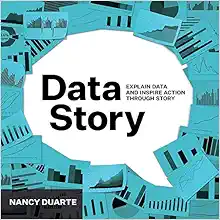
Real-World Machine Learning by Henrik Brink, Joseph W. Richards and Mark Fetherolf.
AWS: The Most Complete Guide to Amazon Web Services from Beginner to Advanced Level by Raoul Alongi.
Practical Deep Learning for Cloud, Mobile, and Edge: Real-World AI & Computer-Vision Projects Using Python, Keras & TensorFlow by Anirudh Koul, Siddha Ganju and Meher Kasam.
Deep Learning for Vision Systems by Mohamed Elgendy.
DataStory: Explain Data and Inspire Action Through Story by Nancy Duarte.
Kristi




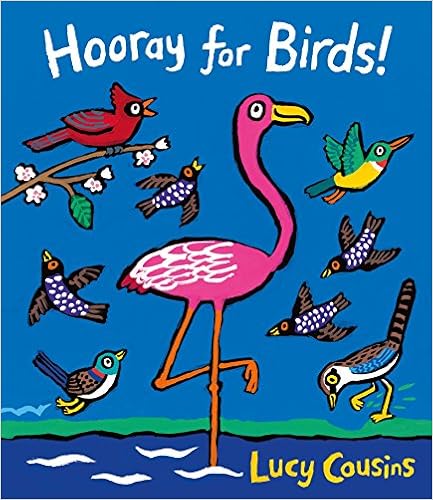
Circe by Madeline Miller. I haven’t read a book this well-written in a long time. Elegant prose throughout. I loved the way Miller added depth and nuance to the classic Greek myths I’ve read throughout my lifetime. The whole book was just delicious, the ending poetic.
The Devil in the White City: Murder, Magic, and Madness at the Fair That Changed America by Erik Larson. This is a really well-told history of the lives of two men during the Industrial Revolution and the construction of the 1893 Chicago World’s Fair (the Columbian Exposition). Both visionaries of their own time: I wouldn’t say one good and one evil, but a stark representation of just how impressive a time it was. On one side Daniel Burnham, the lead architect and operational manager of the World’s Fair, who sacrificed his own (and others’) blood, sweat, and tears to direct the construction of one of the greatest exhibitions ever seen. On the other side, H.H. Holmes, a cruel and chilling psychopathic murderer who cut out his own infamy in the White City.
The House in the Cerulean Sea by TJ Klune. The fear of the unknown is almost always an irrational one, and it must be faced directly in order to grow in any way. This is the lesson the book’s main character, Linus Baker, learns when the government operation he works for (DICOMY, the Department in Charge of Magical Youth) plucks him from his boring, safe, desk job in the city and thrusts him into an island orphanage overlooking a cerulean sea.
What starts as Linus’s standard DICOMY investigation, governed strictly by its Rules & Regulations Handbook, evolves into a gentle unraveling of the illusion Linus has lived under all his life. By the end of the book, Linus Baker becomes the sweet, gentle hero we all wish to see in the world.
Quit Like a Woman: The Radical Choice to Not Drink in a Culture Obsessed with Alcohol by Holly Whitaker. I entertained my sober curious journey with a few “quit lit” books this year, and this one was my favorite so far. While Whitaker gets a little heavy-handed at times in tone (I listened to the audiobook, narrated by the author), this is the quit lit book that resonated the most with me. Whether it just reached me at the right point in time, or whether the author was able to deliver the right mix of introspection, scientific/political/cultural analysis, and humor, I just loved it. Will likely listen to it again.
Hooray for Birds! by Lucy Cousins. I have to give a nod to a children’s book for my son, Finnegan. This one is quite fun to read along with kids as they “waddle like a penguin” or “stand very tall on just one leg” like a flamingo. Have a giggle with this one!
Chris H (conceptdawg)



The 99% Invisible City: A Field Guide to the Hidden World of Everyday Design by Roman Mars and Kurt Kohlstedt.Fascinating stories about the everyday things around us and the design and thought that goes into every one of them. Cell towers, spray painted codes on streets and sidewalks, hidden power stations and camouflaged vents for sewer systems, and boundary stones are just some of the mundane things that are discussed in the book. 99% Invisible is a podcast concentrating on similar themes and many of the stories in the book are taken from previous episodes, so if you are a listener you’ll probably enjoy this book but some of the stories might seem familiar.
Sea Power: The History and Geopolitics of the World’s Oceans by James Stavridis. A great overview of how the world’s oceans have played critical roles in the history of geopolitics from the ancient world until today. Stavridis—a US Navy admiral—dives into the history of each ocean in respective sections of the book, mostly concentrating on history with respect to trade and warfare.
The Secret Lives of Color by Kassia St Clair. I’m a color nerd so any book on color is likely going to be enjoyable for me. This is not the absolute best book on the history of colors and pigments (that award I’d give to Finlay’s Color: A Natural History of the Palette) but Secret Lives was enjoyable and packed with stories about scores of colors: their histories, their sources, people connected to their development, and usually an interesting anecdote or two. Due to the small—one to two pages—chapters on each color it was enjoyable for an easy read that you can pick up and put back down in quick sessions.
Abigail
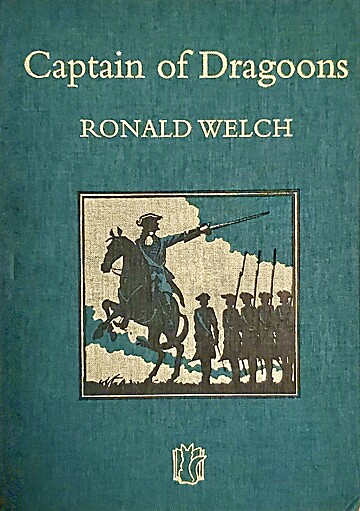


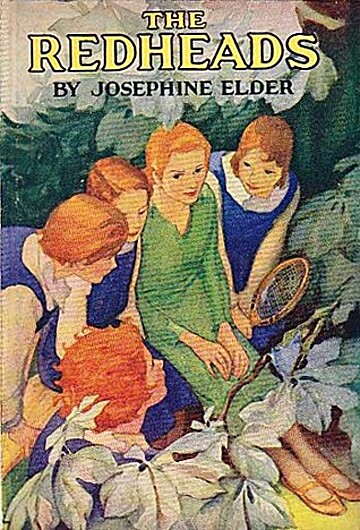

Captain of Dragoons by Ronald Welch. Part of the Carey Family Chronicles, a loosely-connected collection of children’s novels which follows the fortunes of a noble Welsh family over the course of many centuries, this is the first work of fiction I have ever read set during the War of the Spanish Succession. Engaging, informative, and ultimately poignant, it is a worthy addition to a brilliant historical fiction series, and kept me engrossed throughout. I particularly appreciated some of the characters’ discussion about the wider significance of the events unfolding around them, as it gave a better sense of the time, without ever feeling intrusive or artificial.
Berry Song by Michaela Goade. This lovely picture book from Caldecott medalist Michaela Goade—she won in 2021 for her work on Carole Lindstrom’s We Are Water Protectors—marks the Tlingit artist’s debut as an author, and is both a narrative and aesthetic triumph. Some of the scenes here were just so gorgeous, both in their overall composition and in the little details—the scene of the little girl entering the forest with her blue bucket, the one in which her hair is made of berries and her dress is the sea—that I needed to spend some time poring over them. The text itself emphasizes the girl and her grandmother’s relationship to land and sea, and the ties of love and gratitude that bind them together. Even the endpapers here are beautiful, highlighting the wealth of different kinds of berries to be found in Alaska! Overall, a wonderful new picture book I would recommend to all picture-book readers looking for gorgeous artwork, stories of our ties to the land, or featuring a Native American / Tlingit cultural background.
Winter Bees & Other Poems of the Cold by Joyce Sidman, illustrated by Rick Allen. Poet Joyce Sidman and engraver and small press operator Rick Allen, who previously collaborated on the Newbery Honor-winning title Dark Emperor & Other Poems of the Night, joined forces again in this picture book examination of the lives of animals and plants in winter. The twelve poems here, about everything from migrating tundra swans to brumating snakes, snowflake formation to arboreal wisdom, were paired with lovely illustrations featuring the fauna and flora in question, as well as a curious fox who makes his way through the book. The poems themselves were appealing, with an occasional turn of phrase that was quite memorable, and a variety of form—one example each of both a pantoum and a triolet—that I found very interesting. The beautiful artwork was created through a mixture of old and new mediums: begun as hand-colored linoleum block prints, and then finished digitally. In sum: a gorgeous picture book, perfect for young children who enjoy poetry, love animals, and appreciate wintry vistas.
The Redheads by Josephine Elder. Published in 1931, this obscure British girls’ school story chronicles the interconnected experiences of five redheads—four pupils and one teacher—at the Addington High School, as each one seeks to adjust to new and changed circumstances in their own way. Josephine Elder, who is particularly noted in the school story genre for her sensitive appreciation for and skilled depiction of the nuanced experiences of girlhood friendship, delivers an engaging and ultimately heartwarming tale here, one in which each character seems to come alive, exhibiting a mixture of good and bad qualities. This is not a title in my own library, or that is held by any libraries here in the states, so I feel very fortunate to have been able to read it, thanks to a friend who is a fellow collector of vintage girls’ literature.
The Thursday Murder Club by Richard Osman. After a few false starts, I found myself racing through this mystery in two days’ time, and ended up enjoying it immensely. I liked all of the characters, and found them all quite interesting, in different ways. The humor appealed to me, and some of the end-of-life situations, by which I decidedly do not mean the murders, were immensely moving. In the end, I think what really impressed me here was less the mystery, and more the characters, with whom I hope to visit again, in the two sequels that have since come out.
Rebecca
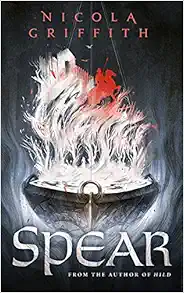




Nona the Ninth by Tamsyn Muir.
You Look Like a Thing and I Love You: How Artificial Intelligence Works and Why It’s Making the World a Weirder Place by Janelle Shane.
Shorefall by Robert Jackson Bennett.
Pedro


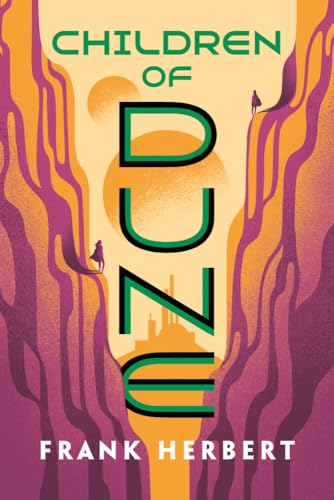

Dune Messiah by Frank Herbert.
Children of Dune by Frank Herbert.
The Hard Thing About Hard Things: Building a Business When There Are No Easy Answers by Ben Horowitz.
That’s it!
Come record your own Top Five Books of 2022 on our December List of the Month, and join the discussion over in Talk.
Labels: top five





Thank you, Chris, “The Secret Lives of Color” sounds so interesting and so does “Color: A Natural History of the Palette” so I am adding both of those to my TO READ list as I type this!